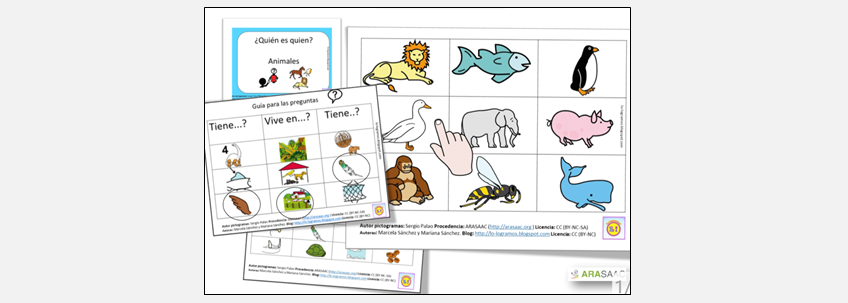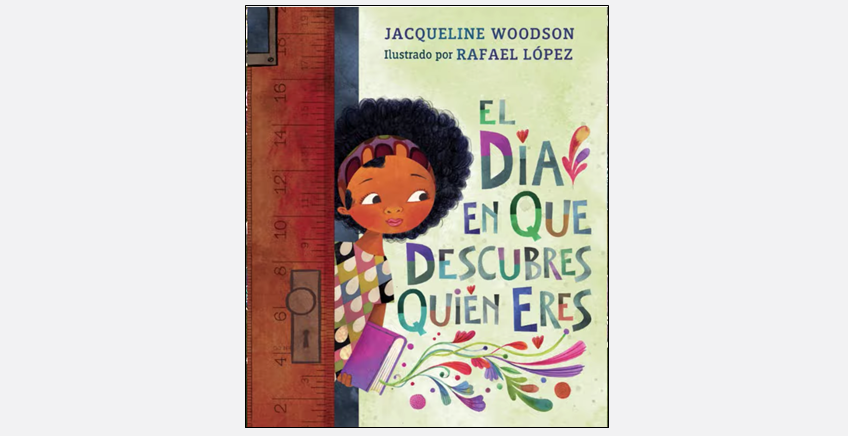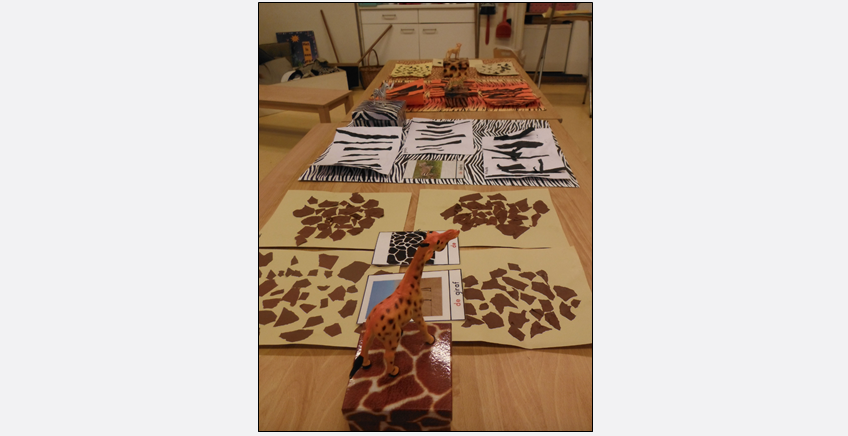Quién/Who
WAYS WE CAN USE THE WORD
ASK QUESTIONS: e.g. ¿De quién es este lapiz? (Who’s pencil is this?)
SHARE INFORMATION: e.g. Voy a decirte quien me gusta mas. (I am going to tell you who I like more.)
INVITE SOMEONE: e.g. ¿Quién quiere ir conmigo al receso? (Who wants to go with me to recess?)
DURING PLAY: ¿Quién va primero? (Who goes first?)
CONJUGATIONS FOR NUMBER
|
SINGULAR |
PLURAL |
|
Quién |
Quienes |
For specific questions or more ideas regarding this core word activity sheet, please contact Isabel Medina @ idmedina@sfsu.edu. Thank you!
Snack/mealtimes: When passing out snacks and meals, adults can model the word by saying for example, “¿Quién quiere manzanas?” (Who wants apples?) or at the end of snack and mealtime say e.g “¿Quién ha terminado su comida?” (Who is all done with their meal?).
Circle: Students and adults can discuss who is in class that day, whose birthday it is that month or who’s turn it is to pick the circle activity that day. They can use phrases like e.g. ¿Quién esta en la escuela hoy? (Who is at school today?), ¿Quién cumple años este mes? (Who has a birthday this month?)
Yo Tengo....¿Quién Tiene? (Classroom objects): Each student receive a card and any student may begin. The student reads their card aloud, naming the object in the picture and asking for the next card by following the sentence “¿Quién tiene la/el XX?) (Who has the XX?). The student who has the card asked for by the first student goes next.
¿Quién es Quién?: Students and adults can play a guessing game in which they try to find out the secret animal of the other player. This is done through different questions. Boards are included, as well as two guides to help you answer the questions.

Recess: Students can use the core word during recess and when initiating new games or activities. They can say e.g. “¿Quién quiere jugar pelota conmigo?” (Who wants to play ball with me?) to invite others to play or “¿Quién quiere ayudarme a limpiar?” (Who wants to help me clean up?) when cleaning up after playing outside.
Here are some suggested books on YouTube that can assist in teaching the core word:
- ¿Quién Tomó las Galletas del Tarro de Galletas? By Bonnie Lass & Philemon Sturges|Teacher Toast
- This book is in Spanish and it is a take on the classic story/song “Who took the cookies from the cookie jar?” with different forest animals. The core word is used throughout the book through repetition when asking “¿Quién tomo las galletas...?”
- ¿QUIÉN ES? ¡CUIDADO! By Patricia Hegarty
- This book is read aloud in Spanish and it is about a little mouse on a journey to his grandma’s house and what animals he encounter on the way. The core word is in the story when asking “¿Quién puede ser?” (Who can it be?) behind each obstacle.
- El Día en que Descubres Quién Eres By Jaqueline Woodson
- This beautiful book, in Spanish, translated from the book “The Day You Begin ” tells the story of feeling like an outsider in a new place or in your environment, especially when you don’t see anyone that looks like you. But when we reach out and begin to share our stories, others will be happy to meet us halfway. Youtube settings can be set to automatic translated subtitles in English.

Social Interactions
¿Quién robó el pan de la casa de San Juan?: Adults can lead this group song/activity by gathering all students in circle. The group all together starts off tge song then individually as each student is named. Once one students gets called then they choose the next student. This chant helps facilitate social interaction and taking conversational turns. An example of the chant goes as follows:
Everyone – Jorge robó pan en la casa de San Juan (Jorge stole the bread from the house in San Juan)
Jorge -¿Quién, yo? (Who, me?)
Everyone– Sí, tú. (Yes you.)
Jorge – Yo no fui. (It wasn’t me)
Everyone – Entonces, ¿quién? (Then, who?)
Jorge – Ana
Everyone – Ana robó pan en la casa de San Juan. (Ana stole the bread from the house in San Juan)
Ana – ¿Quién, yo? (Who, me?)
Everyone – Sí, tú. (Yes, you.)
Ana – Yo no fui. (It wasn’t me)
Everyone – Entonces, ¿quién? (Then, who?)
Ana – Mari
Click here for an example of how to play.
Video Modeling
The Spanish Word of the Day: Quién and how to use it | Learn Spanish World:
Animal Pattern Sensory Board: Students can create an animal pattern sensory board together and play a game of “¿Quién tiene..? (Who has..?). Students can take turns feeling the different textures and a peer or adult can ask “¿Quién tiene el pelaje suave?” (Who has the soft fur?) or ¿Quién tiene la piel dura? (Who has the hard skin?).

Character Sensory Bin: ¿Quién puedes encontrar? (Who can you find?). Adults can put together a sensory bin with students highly preferred characters. Students can search through the bin and see who they find. Adults can model the word by saying e.g. ¿A quién encontraste? (Who did you find?). The example below is a ‘Finding Nemo’ themed bin.

- ¿Quién Tomó La Galleta? | Super Simple Español
- Quién Es Tocando Mi Ventana |Mundo Canticuentos
- Sésamo: La decisión de Lily | Plaza Sesamo
- During this animated short, adults can model the core word by saying ¿Quién tiene la sombrilla azul? (Who has the blue umbrella?) or ¿Quién tiene que comprar una sombrilla nueva? (Who has to buy a new umbrella?). Students can also comment on the video by asking questions such as e.g. ¿Quién esta caminando con Elmo? (Who is walking with Elmo?)
Frida Kahlo| Biografía en cuento para niños|Shackleton Kids: Adults can create a lesson surrounding different important figures in society and history. An example would be a lesson titled e.g “¿Quién era Frida Kahlo?” (Who was Frida Khalo?) using the video above. Students can color pictures of the person or create paper dolls.
Another Resource: Yo tengo ¿Quién tiene? Letter Sounds in Spanish Game.
Cut and Paste Activity, ¿Quién puede adivinar la persona? (Who can guess the person?): Adults can cut up a poster of an important figure in society into squares or strips. These can be scrambled and students can try to guess who the person is or can help un-scaramble them and glue them onto a new blank page. Throughout this activity, adults can model the the core word e.g. ¿Quién necesita ayuda? (Who needs help?), ¿Quién crees que es? (Who do you think it is?), ¿Quién termino su proyecto? (Who finished their project?) etc.
Build a Halloween Character series: Students can create their own character using these free buildable character printouts. The website contains these halloween characters as well as hundreds of other characters to choose from. Adults and students can use the core word when giving students/peers the options of who they would like to create e.g. ¿Quién quieres construir? (Who do you want to build?) or students can ask eachother “¿Quién estas contruyendo?” (Who are you building?)
PBS Kids – Spanish Games: This website contains many games in Spanish with characters from familiar TV shows. Adults can model the core word when asking who wants to play (¿Quién quiere jugar?), who is up next, (¿Quién sigue?), and throughout the games by saying Who is hiding behind the door (¿Quién está escondido detrás de la puerta?), etc.
WORD WALL: Create a WordWall and add ‘Quién’ to the list.
READING and the Word Wall: Sound out the letters together. Have the students find the word on the AAC system.
WRITING and the Word Wall: Using a pencil or alternative pencil, have students try to type the word on the keyboard or write the word together.
Choosing Words for the Classroom Word Wall with Dr. Caroline Musselwhite Video. Courtesy of Edmonton Regional Learning Consortium.